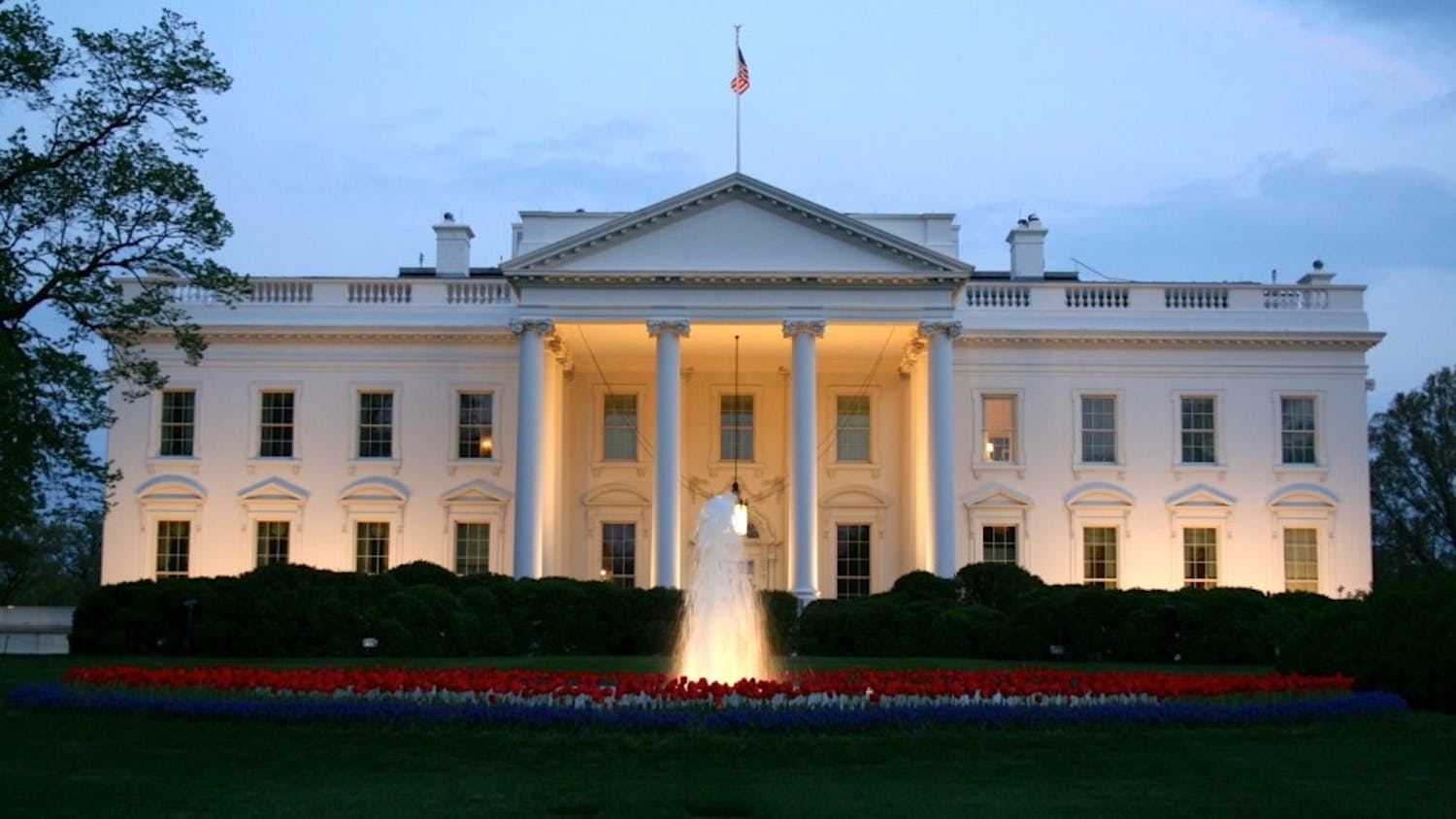More than 100 AU students protested on Inauguration Day, several of whom were affected by pepper spray that D.C. police used to control crowds around Pennsylvania Avenue and 14th Street during the parade.
A group of protesters tried to remove security fences and a handful got through, according to Reuters. Some activists wore gasmasks and threw rocks, snow and water bottles at the officers. About a dozen people were affected by the pepper spray and vomited and shouted, while some others covered their noses with scarves and sleeves and tried to get into the Willard Hotel, The Eagle witnessed.
AU student Brian Kruglak, a co-facilitator of student group Community Action and Social Justice (CASJ) coalition, was one of the protesters affected. He was hit with a pepper spray pellet cast at him from a five-foot range, he said.
The unprecedented level of security set the 55th presidential inauguration apart from other inaugurations. About 13,000 officers and troops guarded the secure zone that spanned more than 100 blocks around the Mall and Capitol, The Washington Post reported.
Some observers referred to the area as a "police state."
"Fences were placed everywhere - military Hummers, Secret Service patrols, motorcycle police, bike police, squad cars, and riot police all landscaped the streets with weaponry such as guns, bully sticks, and chemicals," said Kruglak, a 22-year D.C. resident. "In front of the protest bleachers that were put up by A.N.S.W.E.R., there were three rows of riot police. I think it was the first time people were able to understand just what it is to live in a military and police state."
Another unique characteristic of this inauguration was the turnout of protesters, said Steven Bielinski, an AU student loosely affiliated with the College Democrats. Fewer activists attended the inauguration than expected, he said.
"This is probably because the protesters feel there is less they can do to work for change since the president is already elected," Bielinski said. "But the protests before and after the Iraq War started saw larger crowds of people who felt they could make a difference. They still had hope because the outcome of the situation hadn't already concluded."
Other students cited the cold weather and the perceived threat of terrorism as factors that kept the numbers down.
Still, a number of AU students awoke early Inauguration Day to bring their political views to an event awash with Republican fanfare. They joined other counter-inaugural groups from across the country to protest President George W. Bush, while "counter-demonstrators," such as the Christian Defense Coalition and the D.C. chapter of the Free Republic, flocked toward the capitol to protest them.
AU student activists set off from the Kay Spiritual Life Center at 9 a.m. Thursday and walked together in a long line to Tenleytown. Because the University was closed they did not have to worry about missing classes. They navigated the overcrowded Metro system and got off at Dupont Circle to join other protest groups such as CODEPINK Women for Peace and A.N.S.W.E.R. (Act Now to Stop War and End Racism) for a New Orleans-style funeral procession to mourn what they predict will be a loss of rights during Bush's second term. A march of resistance organized by DAWN (D.C. Anti-War Network) to McPherson Square followed the mock funeral. Some students also joined the Anarchist Resistance March.
Thousands of activists carried signs and banners, wore anti-Bush clothing, and chanted anti-Bush slogans. Posters with messages of "Not my president, not my war," "Worst President Ever," and "Hitler was also democratically elected" accompanied chants of "Racist, sexist, anti-gay, Bush and Cheney, go away."
CASJ co-facilitators began planning for counter-inaugural activities before final exams last semester. After Kruglak and other co-facilitators set up the first meeting, they recruited potential participants by using fliers, listservs and word-of-mouth. Members of on-campus groups such as the Radical Cheerleaders, the Movement for Global Justice, Hunger and Homelessness, and the College Democrats joined forces to fight the Bush inauguration.
Kruglak said he was pleased with the enthusiasm and support CASJ received from its own members and those from other groups.
"CASJ was so excited and impressed with the number of kids who came out to the meetings and to the protest itself," Kruglak said. "It was such a wonderful community-builder for students at this school who may have not otherwise had a chance to get to know one another."
Known as "J20" in the activist community, the presidential inauguration provides an opportunity for dissenters to publicize their views while many watch from around the country and the world. The protesters aimed to reach a broad target audience that included the president, the Bush administration, mainstream media, Bush supporters, and the general public. Activists that spanned the spectrums of age, gender, color and creed convened in downtown D.C. to rally against issues ranging from the war in Iraq and Bush's economic policy, to the president's pro-life leanings and his inaugural events, which cost $40 million. Private donors provided much of the money, though the inaugural committee said D.C. must pay the $12 million in security costs.




